
www.rexton.com
Mosaic M 8C, Mosaic P 8C
User Guide

2
Content
Welcome 4
Your hearing inruments 5
Inrument type 5
Getting to know your hearing inruments 6
Components and names 7
Controls 10
Hearing programs 11
Features 11
Batteries 12
Battery size and handling tips 12
Replacing batteries 13
Daily use 14
Turning on and o 14
Inserting and removing the hearing inruments 15
Adjuing the volume 18
Changing the hearing program 19
Further adjuments (optional) 19
Special liening situations 20
On the phone 20
Audio reaming with iPhone 21
Airplane mode 21
Audio induction loops (optional) 22

3
Maintenance and care 23
Hearing inruments 23
Ear pieces, earhooks and tubes 24
Professional maintenance 28
Further information 29
Safety information 29
Accessories 29
Symbols used in this document 30
Troubleshooting 31
Country-specic information 32
Service and warranty 35

4
Welcome
Thank you for choosing our hearing inruments to
accompany you through everyday life. Like anything new,
it may take you a little time to become familiar with them.
This guide, along with support from your Hearing Care
Professional, will help you underand the advantages
and greater quality of life your hearing inruments oer.
To receive the mo benet from your hearing
inruments, it is recommended that you wear them every
day, all day. This will help you get adjued to them.
CAUTION
It is important to read this user guide and the safety
manual thoroughly and completely. Follow the
safety information to avoid damage or injury.

5
Your hearing inruments
This user guide describes optional features that
your hearing inruments may or may not have.
Ask your Hearing Care Professional to indicate the
features that are valid for your hearing inruments.
Inrument type
Your hearing inruments are BTE (Behind-The-Ear)
models. A tube delivers the sound from the hearing
inrument into the ear. The inruments are not intended
for children under the age of 3 years or persons with a
developmental age of under 3 years.
The wireless functionality enables advanced audiological
features and synchronization between your two hearing
inruments.
Your hearing inruments feature Bluetooth® low energy*
technology allowing for easy data exchange with your
smartphone, and for seamless audio reaming with your
iPhone**.
* The Bluetooth word mark and logos are owned by the Bluetooth SIG, Inc., and any
use of such marks by the legal manufacturer of this product is under licenses. Other
trademarks and trade names are those of their respective owners.
** iPhone is a trademark of Apple Inc., regiered in the U.S. and other countries.

6
Getting to know your hearing inruments
It is recommended to familiarize yourself with your new
hearing inruments. With the inruments in your hand
try using the controls and note their location on the
inrument. This will make it easier for you to feel and
press the controls while wearing the hearing inruments.
If you have problems pressing the controls of your
hearing inruments while wearing them, you can
use a remote control to control your inruments.
With a dedicated smartphone app you have even
more control options.

7
Components and names
This user guide describes several types of hearing
inruments. Use the following pictures to identify the type
of hearing inrument that you use.
Your hearing inruments are either attached to an
earhook and a cuom-made ear piece or to a andard
tube (ThinTube) and a andard ear piece (Open Tip).
Mosaic M 8C
➌
➋
➊
➎
➍
➏ ➏
➐ ➐
➑ ➑
➊ Ear piece (Open Tip)
➋ Retention rand
(optional)
➌ Tube (ThinTube)
➍ Adapter for ThinTube
➎ Earhook
➏ Microphone openings
➐ Rocker switch (control)
➑ Battery compartment
(on/o switch)

8
Mosaic P 8C
➌
➋
➊
➐
➑
➎
➐
➑
➎
➏
➍
➊ Ear piece (Open Tip)
➋ Retention rand
(optional)
➌ Tube (ThinTube)
➍ Adapter for ThinTube
➎ Microphone openings
➏ Earhook
➐ Rocker switch (control)
➑ Battery compartment
(on/o switch)

9
You can use andard ear pieces together with a
andard tube or cuom-made ear pieces together with
an earhook and tube.
You can easily exchange the andard ear pieces
and clean the andard tube. Read more in section
"Maintenance and care".
Standard ear pieces / tubes Size
Open Tip open or closed
Open Tip semi-open
Open Tip double
ThinTube
Cuom-made ear pieces
Examples:

10
Controls
With the rocker switch you can, for
example, adju the volume or switch
hearing programs. Your Hearing Care
Professional has programmed your
desired functions to the rocker switch.
Rocker switch function LR
Press briey:
Program up/down
Volume up/down
Tinnitus Function: volume up/down
TV ream on/o
Press for about 2 seconds:
Program up/down
Volume up/down
Tinnitus Function: volume up/down
TV ream on/o
Press for more than 3 seconds:
Standby/turn on
Activate/deactivate airplane mode
L = Left, R = Right

11
You can also use a remote control to change
hearing programs and adju the volume of your
hearing inruments. With our smartphone app you
have even more control options.
Hearing programs
1
2
3
4
5
6
Read more in section "Changing the hearing program".
Features
Power-on delay enables while-free insertion of
hearing inruments.
Read more in section "Turning on and o".
The Tinnitus Function generates a sound to
diract you from your tinnitus.
A telecoil is integrated in the battery compartment,
enabling the hearing inrument to connect with
audio induction loops.
Read more in section "Audio induction loops".

12
Batteries
When the battery is low the sound becomes weaker
or you will hear an alert signal. The battery type will
determine how long you have to replace the battery.
Battery size and handling tips
Ask your Hearing Care Professional for recommended
batteries.
Battery size: 13
■ Always use the correct battery size for your hearing
inruments.
■ Remove the batteries if you intend not to use the
hearing inruments for several days.
■ Always carry spare batteries.
■ Remove empty batteries immediately and follow your
local recycling rules for battery disposal.

13
Replacing batteries
Removing the battery:
XOpen the battery compartment.
XUse the magnet ick to pull out the
battery. The magnet ick is available
as an accessory.
Inserting the battery:
XIf the battery has a protective lm, remove it
only when you are ready to use the battery.
XInsert the battery with the "+" symbol
facing up (refer to the picture).
XCarefully close the battery compartment. If you feel
resiance, the battery is not inserted correctly.
Do not attempt to close the battery compartment by
force. It can be damaged.

14
Daily use
Turning on and o
You have the following options to turn your hearing
inruments on or o.
Via battery compartment:
XTurning on: Close the battery compartment.
The default volume and hearing program are set.
XTurning o: Open the battery compartment to the r
catch.
Via rocker switch:
XTurning on or o: Press and hold the rocker switch for
several seconds. Refer to section "Controls" for the
settings of the rocker switch.
After turning on, the previously used volume and
hearing program remain set.
When wearing the hearing inruments, an alert tone can
indicate when an inrument is being turned on or o.
When the power-on delay is activated, the hearing
inruments turn on after a delay of several seconds.
During this time you can insert the hearing inruments
into your ears without experiencing unpleasant feedback
whiling.
The "power-on delay" can be activated by your Hearing
Care Professional.

15
Inserting and removing the hearing inruments
Your hearing inruments have been ne-tuned for your
right and left ear. Colored markers indicate the side:
■ red marker = right ear
■ blue marker = left ear
Inserting a hearing inrument:
XHold the tube close to the ear piece.
XCarefully push the ear piece
into the ear canal ➊.
XTwi it slightly until it sits
well.
Open and close your mouth
to avoid accumulation of air
in the ear canal.
XLift the hearing inrument
and slide it over the top of
your ear ➋.
CAUTION
Risk of injury!
XInsert the ear piece carefully and not too deeply
into the ear.

16
■ It may be helpful to insert the right hearing
inrument with the right hand and the left
hearing inrument with the left hand.
■ If you have problems inserting the ear piece,
use the other hand to gently pull your earlobe
downwards. This opens the ear canal and eases
insertion of the ear piece.
The optional retention rand helps to securely retain the
ear piece in your ear. To position the retention rand:
XBend the retention rand and
position it carefully into the
bottom of the bowl of your ear
(refer to the picture).

17
Removing a hearing inrument:
XLift the hearing inrument
and slide it over the top of
your ear ➊.
XHold the tube close to
the ear piece and pull the
ear piece out carefully ➋.
CAUTION
Risk of injury!
XIn very rare cases the ear piece could remain in
your ear when removing the hearing inrument.
If this happens, have the ear piece removed by
a medical professional.
Clean and dry your hearing inruments after usage.
Read more in section "Maintenance and care".

18
Adjuing the volume
Your hearing inruments automatically adju the volume
to the liening situation.
XIf you prefer manual volume adjument, press the
rocker switch.
Refer to section "Controls" for the setting of the
rocker switch.
An optional signal tone can indicate the volume change.
Once the maximum or minimum volume has been
reached, you may hear an optional signal tone.

19
Changing the hearing program
Depending on the liening situation, your hearing
inruments automatically adju their sound.
Your hearing inruments may also have several hearing
programs which allow you to change the sound, if
needed. An optional signal tone can indicate the program
change.
XTo change the hearing program, press the
rocker switch.
Refer to section "Controls" for the setting of the
rocker switch. Refer to section "Hearing programs" for
a li of your hearing programs.
The default volume is applied.
Further adjuments (optional)
The controls of your hearing inruments can also
be used to change, for example, the volume of the
Tinnitus Function.
Refer to section "Controls" for the setting of your controls.

20
Special liening situations
On the phone
When you are on the phone, hold
the telephone receiver slightly above
your ear. The hearing inrument and
telephone receiver have to be aligned.
Turn the receiver slightly so that the ear
is not completely covered.
Telephone program
You may prefer a certain volume when using the phone.
Ask your Hearing Care Professional to congure a
telephone program.
XSwitch to the telephone program whenever you are on
the phone.
If a telephone program is congured for your hearing
inruments, it is lied in section "Hearing programs".

21
Audio reaming with iPhone
Your hearing inruments are Made for iPhone hearing
inruments. This means you can get phone calls and
lien to music from your iPhone directly into your hearing
inruments.
For more information about compatible iOS devices,
pairing, audio reaming and other useful functions,
contact your Hearing Care Professional.
Airplane mode
In areas where the use of Bluetooth technology is not
allowed (e.g. on some airplanes), you can activate the
airplane mode. This turns Bluetooth in your hearing
inruments o temporarily. The hearing inruments ill
work without Bluetooth, however direct audio reaming
will not be possible and other functions will not be
available.
XTo activate or deactivate the airplane mode, use the
smartphone app or use the controls of your hearing
inruments.
Refer to section "Controls" for more information.
An alert tone indicates when airplane mode is activated
or deactivated.

22
Audio induction loops (optional)
Some telephones and public places like theatres oer the
audio signal (music and speech) via an audio induction
loop. With this syem, your hearing inruments can
directly receive the desired signal – without diracting
noise in the environment.
You can usually recognize audio induction
loop syems by certain signs.
If you want to use this syem, a special battery
compartment is required. It is available as an accessory
only for certain types of inruments. Consult your
Hearing Care Professional for more information.
Whenever you are in a place with an audio induction
loop:
XSwitch to the telecoil program.
If a telecoil program is congured for your hearing
inruments, it is lied in section "Hearing programs".

23
Maintenance and care
To prevent damage it is important that you take care of
your hearing inruments and follow a few basic rules,
which will soon become a part of your daily routine.
Hearing inruments
Drying and orage
XDry your hearing inruments overnight.
XFor longer periods of non-use, ore your hearing
inruments in a dry environment with an open battery
compartment and the batteries removed.
XAsk your Hearing Care Professional for more
information.
Cleaning
Your hearing inruments have a protective coating.
However, if not cleaned regularly you may damage the
hearing inruments or cause personal injury.
XClean your hearing inruments daily with a soft, dry
tissue.
XNever use running water or immerse the
devices in water.
XNever apply pressure while cleaning.
XAsk your Hearing Care Professional for recommended
cleaning products, special care sets, or more
information on how to keep your hearing inruments
in good condition.

24
Ear pieces, earhooks and tubes
Cerumen (ear wax) may accumulate on the ear pieces.
This may aect sound quality.
■ For hearing inruments with a andard tube
(ThinTube):
Clean the ear pieces daily, clean the tubes as
required.
Exchange the ear pieces and tubes approximately
every three to six months, or sooner if you notice
cracks or other changes.
■ For hearing inruments with earhook:
Clean the ear pieces daily.
Exchange the earhooks if you notice cracks or other
changes.
Ask your Hearing Care Professional to clean the tubes
or to exchange the ear pieces and tubes as needed.

25
Cleaning ear pieces
XClean the
ear piece upon
removal with
a soft and dry
tissue.
This prevents
cerumen
becoming dry
and hardening.
XNever use running water or immerse the ear piece in
water.

26
Cleaning andard tubes
Never use running water or immerse the tube in water.
You can clean andard tubes (ThinTube) using a special
cleaning wire. Ask your Hearing Care Professional for
suitable cleaning wires.
XRemove tube and adapter by unscrewing the adapter
from the hearing inrument.
XCarefully insert the cleaning wire into the adapter ➊.
XPush the cleaning wire all the way through the tube ➋.
➋
➊
XWipe away any cerumen or debris that is dislodged.
XCompletely remove the cleaning wire.
XRe-attach tube and adapter to the hearing inrument.

27
Exchanging andard ear pieces (Open Tip)
XPull o the used ear piece
and plug on the new
ear piece.
Exchanging andard tubes and adapters
XUnscrew the used tube from the adapter ➊.
XIf necessary, unscrew the used adapter ➋.
➋➊
XScrew on the new adapter and tube.

28
Exchanging earhooks
XUnscrew the used earhook.
XPosition the earhook on the thread as shown in
picture ➊.
XGently screw on the earhook with three full turns ➋.
Do not turn it further to prevent damage.
3x
➊➋
Professional maintenance
Your Hearing Care Professional can perform a thorough
professional cleaning and maintenance.
Cuom-made ear pieces and wax lters should
be exchanged as needed by your Hearing Care
Professional.
Ask your Hearing Care Professional for your individual
recommendation of maintenance intervals and for
support.

29
Further information
Safety information
For more safety information, refer to the safety manual
supplied with the device.
Accessories
You can use the Smart Direct App for convenient remote
control of your hearing inruments. The app also allows
you to deactivate signal tones, to create individual sound
proles and many more functions.
You can also use a remote control.
Consult your Hearing Care Professional for further
information.

30
Symbols used in this document
Points out a situation that could lead to serious,
moderate, or minor injuries.
Indicates possible property damage.
Advice and tips on how to handle your device better.
"Made for iPhone" means that an electronic
accessory has been designed to connect specically to
iPhone and has been certied by the developer to meet
Apple performance andards. Apple is not responsible
for the operation of this device or its compliance with
safety and regulatory andards. Please note that the
use of this accessory with iPhone may aect wireless
performance.

31
Troubleshooting
Problem and possible solutions
Sound is weak.
■ Increase the volume.
■ Replace the empty battery.
■ Clean or exchange the tube and the ear piece.
Hearing inrument emits whiling sounds.
■ Reinsert the ear piece until it ts securely.
■ Decrease the volume.
■ Clean or exchange the ear piece.
Sound is diorted.
■ Decrease the volume.
■ Replace the empty battery.
■ Clean or exchange the tube and the ear piece.
Hearing inrument emits signal tones.
■ Replace the empty battery.
Hearing inrument does not work.
■ Turn the hearing inrument on.
■ Gently close battery compartment completely.
■ Replace the empty battery.
■ Make sure the battery is inserted correctly.
■ Power-on delay is active. Wait several seconds
and check again.
Consult your Hearing Care Professional if you encounter
further problems.

32
Country-specic information
USA and Canada
Certication information for hearing inruments with
wireless functionality:
Mosaic M 8C
■ HVIN: WP4N0
■ FCC ID: SGI-BTE001
■ IC: 267AB-BTE001
Mosaic P 8C
■ HVIN: WP4N1
■ Contains FCC ID: SGI-RFM001
■ IC: 267AB-WP4N1

33

34

35
Service and warranty
Serial numbers
Left:
Right:
Service dates
1: 4:
2: 5:
3: 6:
Warranty
Date of purchase:
Warranty period in months:
Your Hearing Care Professional


www.rexton.com
Mosaic M 8C, Mosaic P 8C
Manual del operador

2
Contenidos
Bienvenido 4
Los audífonos 5
Tipo de audífono 5
La importancia de conocer el audífono 6
Componentes y nombres 7
Controles 10
Programas de audición 11
Caracteríicas 12
Pilas 13
Tamaño de la pila y consejos para el manejo 13
Suituir las pilas 14
Uso diario 15
Conexión y desconexión 15
Inserción y extracción de los audífonos 17
Regulación del volumen 20
Cambio del programa de audición 21
Más ajues (opcional) 21
Situaciones de escucha especiales 22
Al teléfono 22
Transmisión de audio con iPhone 23
Modo avión 23
Bucles de inducción de audio (opcional) 24

3
Mantenimiento y cuidados 25
Audífonos 25
Moldes, ganchos de sujeción y tubos 26
Mantenimiento profesional 30
Información adicional 31
Información de seguridad 31
Accesorios 31
Símbolos utilizados en ee documento 32
Solución de problemas 33
Información especíca por país 34
Servicio y garantía 35

4
Bienvenido
Gracias por elegir nueros audífonos para que le
acompañen en su vida cotidiana. Como todas las cosas
nuevas, es posible que tarde un poco en familiarizarse
con ellos.
Ee manual, junto con la asiencia de su especialia en
audición, le ayudará a conocer las ventajas y la calidad
de vida superior que le ofrecen los audífonos.
Para obtener el máximo benecio posible de los
audífonos, se recomienda que los lleve a diario y durante
todo el día. Eo le ayudará a adaptarse a ellos.
ATENCIÓN
Es importante que lea detenidamente ee manual
del operador y el manual de seguridad de principio
a n. Siga la información de seguridad para evitar
daños o lesiones.

5
Los audífonos
En ee manual del operador se describen
caracteríicas opcionales que sus audífonos
pueden tener o no tener.
Solicite al especialia en audición que le indique
qué caracteríicas son válidas para sus audífonos.
Tipo de audífono
Los audífonos son modelos BTE (Behind-The-Ear).
Un tubo transmite el sonido del audífono al oído. Eos
audífonos no se han diseñado para niños menores de
3 años ni para personas cuya edad de desarrollo eé
por debajo de los 3 años.
La funcionalidad inalámbrica proporciona caracteríicas
audiológicas avanzadas entre los dos audífonos.
Los audífonos incorporan la tecnología
Bluetooth® low energy*, que permite intercambiar datos
de manera sencilla con su smartphone y transmitir audio
sin problemas con su iPhone**.
* La marca del término Bluetooth y sus logotipos son propiedad de Bluetooth SIG,
Inc. y el uso de dichas marcas por parte del fabricante autorizado se realiza bajo
licencia. Las demás marcas regiradas y nombres comerciales pertenecen a sus
respectivos propietarios.
** iPhone es una marca regirada de Apple Inc. en EE. UU. y en otros países.

6
La importancia de conocer el audífono
Se recomienda familiarizarse con el nuevo audífono. Con
el inrumento en la mano, intente utilizar los controles
y recordar su ubicación en el inrumento. Eo facilita
la localización de los controles para pulsarlos al llevar el
audífono pueo.
Si tiene problemas para pulsar los controles de los
audífonos cuando los lleva pueos, puede utilizar
un telemando para controlarlos. Con una aplicación
para smartphone especializada, dispone incluso de
más opciones de control.

7
Componentes y nombres
En ee manual del operador se describen diversos
tipos de audífonos. Utilice las imágenes siguientes para
identicar su tipo de audífono.
Los audífonos eán acoplados a un gancho de
sujeción y un molde a medida, o a un tubo eándar
(tubo no, ThinTube) y un molde eándar (Open Tip).
Mosaic M 8C
➌
➋
➊
➎
➍
➏ ➏
➐ ➐
➑ ➑
➊ Molde (Open Tip)
➋ Filamento de sujeción
(opcional)
➌ Tubo no (ThinTube)
➍ Adaptador para tubo
no (ThinTube)
➎ Gancho de sujeción
➏ Oricios del micrófono
➐ Conmutador (control)
➑ Compartimento de
la pila (interruptor de
encendido/apagado)

8
Mosaic P 8C
➌
➋
➊
➐
➑
➎
➐
➑
➎
➏
➍
➊ Molde (Open Tip)
➋ Filamento de sujeción
(opcional)
➌ Tubo no (ThinTube)
➍ Adaptador para tubo
no (ThinTube)
➎ Oricios del micrófono
➏ Gancho de sujeción
➐ Conmutador (control)
➑ Compartimento de la pila
(interruptor de conexión/
desconexión)

9
Puede utilizar moldes eándar con un tubo eándar o
moldes a medida con gancho de sujeción y tubo.
Puede intercambiar fácilmente los moldes eándar y
limpiar el tubo eándar. Obtenga más información en la
sección "Mantenimiento y cuidados".
Moldes/Tubos eándar Tamaño
Open Tip abierto o cerrado
Open Tip semiabierto
Open Tip doble
ThinTube
Moldes a medida
Ejemplos:

10
Controles
Con el conmutador podrá, por ejemplo,
ajuar el volumen o cambiar de
programa de audición. Su especialia
en audición ha programado las funciones
deseadas para el conmutador.
Función del conmutador LR
Pulsación corta:
Programa arriba o abajo
Volumen arriba o abajo
Función de Tinitus: volumen arriba o abajo
Transmisión de TV activada/desactivada
Pulse durante unos 2 segundos:
Programa arriba o abajo
Volumen arriba o abajo
Función de Tinitus: volumen arriba o abajo
Transmisión de TV activada/desactivada
Pulse durante más de 3 segundos:
En espera/Conectar
Activar/desactivar el modo avión
L = izquierda, R = derecha

11
También puede utilizar un telemando para cambiar
los programas de audición y ajuar el volumen
de los audífonos. Con nuera aplicación para
smartphone, dispone incluso de más opciones de
control.
Programas de audición
1
2
3
4
5
6
Obtenga más información en la sección
"Cambio del programa de audición".

12
Caracteríicas
El retardo de la conexión activa la inserción de
audífonos sin silbidos.
Obtenga más información en la sección
"Conexión y desconexión".
La función de Tinitus genera un ruido para
diraerle de los acúfenos.
Hay una bobina telefónica integrada en el
compartimento de la pila que permite que el
audífono se conecte con bucles de inducción de
audio.
Obtenga más información en la sección
"Bucles de inducción de audio".

13
Pilas
Cuando el nivel de la pila es bajo, el sonido se vuelve
más débil o se oye una señal de alerta. El tipo de
pila determinará el tiempo disponible haa tener que
suituir la pila.
Tamaño de la pila y consejos para el manejo
Solicite las pilas recomendadas a su especialia en
audición.
Tamaño de la pila: 13
■ Utilice siempre el tamaño de pila adecuado para sus
audífonos.
■ Extraiga las pilas si no va a usar los audífonos durante
varios días.
■ Lleve siempre pilas de repueo.
■ Extraiga inmediatamente las pilas descargadas y siga
la normativa local de reciclaje para eliminar las pilas.

14
Suituir las pilas
Retirar la pila:
XAbra el compartimento de la pila.
XUtilice el quitapilas magnético
para extraer la pila. El quitapilas
magnético eá disponible como
accesorio.
Colocar la pila:
XSi la pila tiene una película protectora,
retírela solo cuando vaya a utilizar la pila.
XInserte la pila con el símbolo "+"
hacia arriba (consulte la imagen).
XCierre con cuidado el compartimento de la pila.
Si ofrece resiencia, la pila no se ha insertado
correctamente.
No intente cerrar el compartimento de la pila
haciendo fuerza. Puede dañarlo.

15
Uso diario
Conexión y desconexión
Dispone de las siguientes opciones para conectar y
desconectar los audífonos.
Con el compartimento de la pila:
XConexión: Cierre el compartimento de la pila.
Se reablecen el volumen y el programa de audición
predeterminados.
XDesconexión: Abra el compartimento de la pila haa
el primer tope.
Con el conmutador:
XConexión o desconexión: Pulse el conmutador y
manténgalo pulsado durante unos segundos. Consulte
la conguración del conmutador en la sección
"Controles".
Tras la conexión, se reablecen el volumen y el
programa de audición utilizados anteriormente.

16
Al llevar los audífonos pueos, un tono de alerta puede
indicar cuándo se conecta o se desconecta el audífono.
Cuando se activa el retardo de la conexión, el
audífono se conecta tras un retardo de varios segundos.
Durante ese tiempo, podrá ponerse los audífonos en
los oídos sin experimentar silbidos de retroalimentación
desagradables.
El especialia en audífonos puede activar el
"retardo de la conexión".

17
Inserción y extracción de los audífonos
Los audífonos se han ajuado para el oído derecho e
izquierdo. Las marcas de color indican el lado:
■ Marca roja = Oído derecho
■ Marca azul = Oído izquierdo
Inserción de un audífono:
XSujete el tubo cerca del molde.
XIntroduzca con
cuidado el molde en el
canal auditivo ➊.
XGírelo un poco para que se
asiente bien.
Abra y cierre la boca para
evitar la acumulación de aire
en el canal auditivo.
XLevante el audífono y deslícelo por la parte superior
de la oreja ➋.
ATENCIÓN
Peligro de lesiones.
XInserte el molde cuidadosamente en el oído y no
profundice demasiado.

18
■ Puede resultarle útil insertar el audífono
derecho con la mano derecha y el audífono
izquierdo con la mano izquierda.
■ Si tiene problemas para insertar el molde, utilice
la otra mano para tirar suavemente del lóbulo de
la oreja hacia abajo. Eo abre el canal auditivo
y facilita la inserción del molde.
El lamento de sujeción opcional ayuda a
retener de forma segura el molde en el oído.
Para colocar el lamento de sujeción:
XDoble el lamento de sujeción y
colóquelo con cuidado en la parte
inferior de la cavidad de la oreja
(consulte la imagen).

19
Extracción de un audífono:
XLevante el audífono y
deslícelo por la parte superior
de la oreja ➊.
XSujete el tubo cerca del
molde y extraiga el molde con
cuidado ➋.
ATENCIÓN
Peligro de lesiones.
XEn casos muy raros, el molde podría
permanecer en el oído al retirar el audífono.
En ee caso, pida que un profesional médico
se lo extraiga.
Limpie y seque los audífonos después de
utilizarlos. Obtenga más información en la sección
"Mantenimiento y cuidados".

20
Regulación del volumen
Los audífonos ajuan automáticamente el volumen a la
situación auditiva.
XSi preere el ajue manual del volumen, accione el
conmutador.
Consulte la conguración del conmutador en la
sección "Controles".
Un tono de aviso opcional puede indicar el cambio de
volumen. Cuando se haya alcanzado el volumen máximo
o mínimo, puede oír un tono de aviso opcional.

21
Cambio del programa de audición
Según la situación de escucha, los audífonos ajuan
automáticamente el sonido.
Es posible que sus audífonos también tengan varios
programas de audición que permitan cambiar el sonido
si es necesario. Un tono de aviso opcional puede indicar
el cambio de programa.
XPara cambiar el programa de audición, accione el
conmutador.
Consulte la conguración del conmutador en la
sección "Controles". Para obtener una lia de
los programas de audición, consulte la sección
"Programas de audición".
Se ha aplicado el volumen predeterminado.
Más ajues (opcional)
Los controles de los audífonos también se pueden
utilizar para cambiar, por ejemplo, el volumen de la
función de Tinitus.
Consulte la conguración de los controles en la sección
"Controles".

22
Situaciones de escucha especiales
Al teléfono
Cuando eé al teléfono, soenga el
receptor del teléfono un poco por encima
de la oreja. El audífono y el receptor del
teléfono deben ear alineados. Gire
el receptor ligeramente hacia fuera, de
modo que la oreja no quede totalmente
cubierta.
Programa de teléfono
Al utilizar el teléfono puede ser necesario un volumen
determinado. Pregunte a su especialia en audición para
congurar un programa de teléfono.
XCambie al programa de teléfono siempre que eé al
teléfono.
Si se ha congurado un programa de teléfono para
los audífonos, aparece en la lia de la sección
"Programas de audición".

23
Transmisión de audio con iPhone
Los audífonos son del modelo Fabricado para iPhone.
Eo signica que puede atender llamadas telefónicas
y escuchar música de su iPhone directamente en los
audífonos.
Para obtener más información sobre dispositivos iOS
compatibles, emparejamiento, transmisión de audio
y otras funciones útiles, póngase en contacto con su
especialia en audición.
Modo avión
En áreas en las que no se permite el uso de tecnología
Bluetooth (por ejemplo, en algunos aviones), puede
activar el modo avión. Eo desconecta el Bluetooth de
los audífonos temporalmente. Los audífonos siguen
funcionando sin Bluetooth. Sin embargo, la transmisión
directa de audio no es posible y otras funciones no eán
disponibles.
XPara activar o desactivar el modo avión, use la
aplicación de smartphone o los controles de los
audífonos.
Consulte la sección "Controles" para obtener más
información.
Un tono de alerta indica cuándo eá activado o
desactivado el modo avión.

24
Bucles de inducción de audio (opcional)
Algunos teléfonos y lugares públicos como los teatros
ofrecen la señal de audio (música y voz) a través de
un bucle de inducción de audio. Con ee siema, los
audífonos pueden recibir directamente la señal deseada,
sin ruido ambiental moleo.
Normalmente los siemas de bucle de
inducción de audio se reconocen por
ciertas señales.
Si desea utilizar ee siema, se requiere un
compartimento especial de la pila. Eá disponible como
accesorio solo para algunos tipos de inrumentos. Si
desea más información, consulte a su especialia en
audición.
Cuando se encuentre en un lugar donde haya bucles de
inducción de audio:
XCambiar a programa de bobina telefónica.
Si se ha congurado un programa de bobina telefónica
para los audífonos, aparece en la lia de la sección
"Programas de audición".

25
Mantenimiento y cuidados
Para evitar daños, es importante cuidar los audífonos y
seguir unas reglas básicas que pronto se convertirán en
parte de su rutina diaria.
Audífonos
Secado y almacenamiento
XSeque el audífono durante la noche.
XDurante períodos más largos de no utilización,
guarde los audífonos en un entorno seco con el
compartimento de la pila abierto y las pilas quitadas.
XSi desea más información, pregunte a su especialia
en audición.
Limpieza
Los audífonos tienen una capa protectora. No obante,
si no se limpian periódicamente, pueden producirse
daños en los audífonos o daños personales.
XLimpie los audífonos a diario con un paño suave y seco.
XNo utilice nunca agua corriente ni sumerja
los dispositivos en agua.
XNo aplique nunca presión durante la
limpieza.
XPregunte a su especialia en audición sobre los
productos de limpieza recomendados y los kits de
mantenimiento, o pídale más información sobre
cómo mantener los audífonos en buen eado.

26
Moldes, ganchos de sujeción y tubos
Puede acumularse cerumen (cera del oído) en los
moldes. Eo puede afectar a la calidad del sonido.
■ En el caso de audífonos con tubo eándar
(ThinTube):
Limpie los moldes diariamente; limpie los tubos
cuando sea necesario.
Suituya los moldes y tubos aproximadamente cada
tres o seis meses, o antes si observa grietas u otros
cambios.
■ Para los audífonos con gancho de sujeción:
Limpie los moldes a diario.
Suituya los ganchos de sujeción si observa grietas u
otros cambios.
Pida a su especialia en audición que limpie los tubos
o suituya los moldes y tubos cuando sea necesario.

27
Limpieza de los moldes
XLimpie el molde con
un paño suave y seco
después de extraerlo.
De ee modo se
evita que el
cerumen se
seque y se
endurezca.
XNo utilice nunca agua corriente ni sumerja el molde en
agua.

28
Limpieza de los tubos eándar
No utilice nunca agua corriente ni sumerja los tubos en
agua.
Se pueden limpiar los tubos eándar (ThinTube) con un
alambre de limpieza especial. Solicite a su especialia
en audición alambres de limpieza adecuados.
XRetire el tubo y el adaptador desatornillando el
adaptador del audífono.
XInserte el alambre de limpieza en el adaptador con
cuidado ➊.
XEmpuje el alambre de limpieza de modo que pase por
todo el tubo ➋.
➋
➊
XRetire el cerumen o los reos que hayan salido.
XRetire completamente el alambre de limpieza.
XVuelva a acoplar el tubo y el adaptador al audífono.

29
Suitución de los moldes eándar (Open Tip)
XRetire el molde usado y
conecte el nuevo molde.
Suitución de los tubos eándar y los adaptadores
XDesenrosque el tubo usado del adaptador ➊.
XSi es necesario, desenrosque el adaptador usado ➋.
➋➊
XEnrosque el adaptador y el tubo nuevos.

30
Suitución de los ganchos de sujeción
XDesenrosque el gancho de sujeción usado.
XColoque el gancho de sujeción en la rosca como se
muera en la imagen ➊.
XEnrosque suavemente el gancho de sujeción dando
tres vueltas completas ➋.
Para evitar daños, no dé ninguna vuelta más.
3x
➊➋
Mantenimiento profesional
El especialia en audición puede realizar una limpieza y
un mantenimiento exhauivos y profesionales.
Los moldes a medida y los ltros de cera deben
suituirse según sea necesario por un especialia en
audición.
Solicite a su especialia en audición una recomendación
personalizada de los intervalos de mantenimiento y
asiencia.

31
Información adicional
Información de seguridad
Para obtener más información de seguridad, consulte el
manual de seguridad suminirado con el dispositivo.
Accesorios
Smart Direct App se puede utilizar para manejar
cómodamente los audífonos. La aplicación también
permite desactivar determinados tonos de señal para
crear perles de sonido individualizados y muchas más
funciones.
También puede utilizar un telemando.
Si desea más información, consulte a su especialia en
audición.

32
Símbolos utilizados en ee documento
Indica una situación que podría provocar lesiones
leves, moderadas o graves.
Indica posibles daños materiales.
Consejos y sugerencias para manejar mejor el
dispositivo.
"Made for iPhone" signica que un
accesorio electrónico se ha diseñado para conectarse
especícamente a un iPhone y el desarrollador ha
certicado que cumple los eándares de rendimiento de
Apple. Apple no es responsable del funcionamiento de
ee dispositivo ni de su conformidad con los eándares
de seguridad ni con las normativas. Tenga en cuenta que
el uso de ee accesorio con un iPhone puede afectar al
rendimiento de la conexión inalámbrica.

33
Solución de problemas
Problema y posibles soluciones
El sonido es débil.
■ Suba el volumen.
■ Suituya la pila descargada.
■ Limpie o intercambie el tubo y el molde.
El audífono emite silbidos.
■ Vuelva a colocar el molde haa que quede bien
asentado.
■ Baje el volumen.
■ Limpie o intercambie el molde.
El sonido se diorsiona.
■ Baje el volumen.
■ Suituya la pila descargada.
■ Limpie o intercambie el tubo y el molde.
El audífono emite tonos de aviso.
■ Suituya la pila descargada.
El audífono no funciona.
■ Conecte el audífono.
■ Cierre suavemente y por completo el
compartimento de la pila.
■ Suituya la pila descargada.
■ Compruebe si la pila eá bien colocada.
■ El retardo de la conexión eá activado. Espere
unos segundos y vuelva a comprobarlo.
En caso de otros problemas, consulte al especialia en
audición.

34
Información especíca por país
EE. UU. y Canadá
Información de certicación para los audífonos con
funcionalidad inalámbrica:
Mosaic M 8C
■ HVIN: WP4N0
■ ID FCC: SGI-BTE001
■ IC: 267AB-BTE001
Mosaic P 8C
■ HVIN: WP4N1
■ Contiene ID FCC: SGI-RFM001
■ IC: 267AB-WP4N1

35
Servicio y garantía
Números de serie
Izquierda:
Derecha:
Fechas de servicio
1: 4:
2: 5:
3: 6:
Garantía
Fecha de compra:
Período de garantía (meses):
Su especialia en audición

Document No. 03524-99T02-6000 EN,ES-USA/D10958042
Order/Item No. 10958042 2.0 RX18737
Master Rev02, 06.2018
© 08.2018, Sivantos GmbH. All rights reserved
www.rexton.com
Copyright © 2018 Rexton. All rights reserved.
Derechos de autor © 2018 Rexton.
Todos los derechos reservados.
Manufacturer and Local Contact
Rexton
A Division of Sivantos, Inc.
P.O. Box 59008
Minneapolis, MN 55459
Hearing Inruments Made in Singapore
Local rev 10/18
-
 1
1
-
 2
2
-
 3
3
-
 4
4
-
 5
5
-
 6
6
-
 7
7
-
 8
8
-
 9
9
-
 10
10
-
 11
11
-
 12
12
-
 13
13
-
 14
14
-
 15
15
-
 16
16
-
 17
17
-
 18
18
-
 19
19
-
 20
20
-
 21
21
-
 22
22
-
 23
23
-
 24
24
-
 25
25
-
 26
26
-
 27
27
-
 28
28
-
 29
29
-
 30
30
-
 31
31
-
 32
32
-
 33
33
-
 34
34
-
 35
35
-
 36
36
-
 37
37
-
 38
38
-
 39
39
-
 40
40
-
 41
41
-
 42
42
-
 43
43
-
 44
44
-
 45
45
-
 46
46
-
 47
47
-
 48
48
-
 49
49
-
 50
50
-
 51
51
-
 52
52
-
 53
53
-
 54
54
-
 55
55
-
 56
56
-
 57
57
-
 58
58
-
 59
59
-
 60
60
-
 61
61
-
 62
62
-
 63
63
-
 64
64
-
 65
65
-
 66
66
-
 67
67
-
 68
68
-
 69
69
-
 70
70
-
 71
71
-
 72
72
REXTON MOSAIC P 80 8C Guía del usuario
- Tipo
- Guía del usuario
- Este manual también es adecuado para
en otros idiomas
- English: REXTON MOSAIC P 80 8C User guide
Artículos relacionados
-
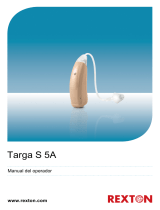 REXTON TARGA S 5A Guía del usuario
REXTON TARGA S 5A Guía del usuario
-
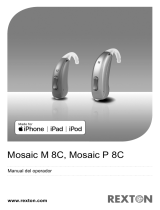 REXTON MOSAIC M 80 8C Guía del usuario
REXTON MOSAIC M 80 8C Guía del usuario
-
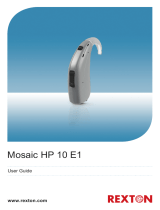 REXTON MOSAIC HP 10 E1 Guía del usuario
REXTON MOSAIC HP 10 E1 Guía del usuario
-
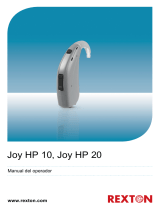 REXTON JOY HP 20 Guía del usuario
REXTON JOY HP 20 Guía del usuario
-
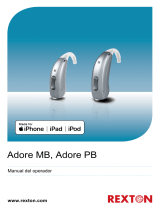 REXTON ADORE PB Guía del usuario
REXTON ADORE PB Guía del usuario
-
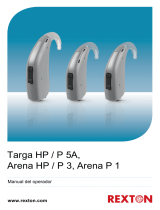 REXTON ARENA HP 3 Guía del usuario
REXTON ARENA HP 3 Guía del usuario
-
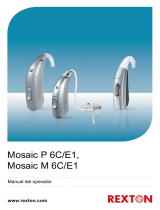 REXTON MOSAIC M 40 6C Guía del usuario
REXTON MOSAIC M 40 6C Guía del usuario
-
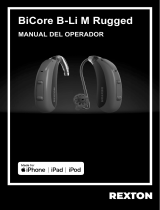 REXTON BiCore B-Li M Rugged SDemo Guía del usuario
REXTON BiCore B-Li M Rugged SDemo Guía del usuario
-
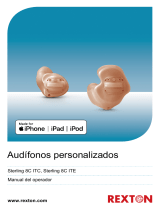 REXTON STERLING 80 8C ITE Guía del usuario
REXTON STERLING 80 8C ITE Guía del usuario
-
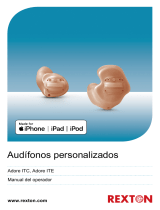 REXTON ADORE ITE Guía del usuario
REXTON ADORE ITE Guía del usuario
Otros documentos
-
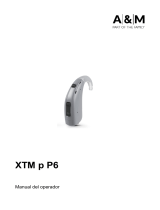 A&M XTM P P6 Guía del usuario
A&M XTM P P6 Guía del usuario
-
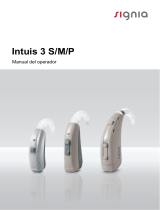 Signia INTUIS 3 S Guía del usuario
Signia INTUIS 3 S Guía del usuario
-
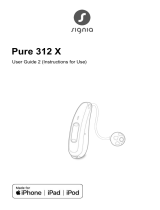 Signia Pure 312 5X Guía del usuario
Signia Pure 312 5X Guía del usuario
-
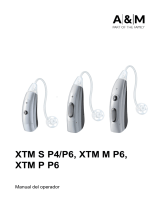 A&M DEMO XTM P P6 Guía del usuario
A&M DEMO XTM P P6 Guía del usuario
-
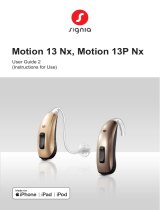 Signia MOTION 13P SDEMO DNX Guía del usuario
Signia MOTION 13P SDEMO DNX Guía del usuario
-
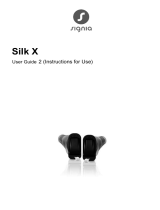 Signia Silk 7X Guía del usuario
Signia Silk 7X Guía del usuario
-
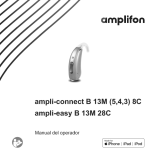 AMPLIFON AMPLI-CONNECT B 13M 38C Guía del usuario
AMPLIFON AMPLI-CONNECT B 13M 38C Guía del usuario
-
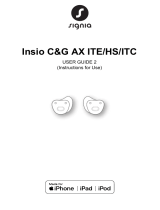 Signia Insio C&G 5AX ITE Guía del usuario
Signia Insio C&G 5AX ITE Guía del usuario
-
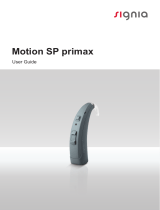 Signia MOTION SP 7PX Guía del usuario
Signia MOTION SP 7PX Guía del usuario
-
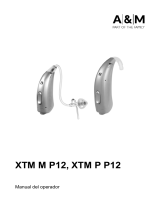 A&M XTM M P12 Guía del usuario
A&M XTM M P12 Guía del usuario



























































































